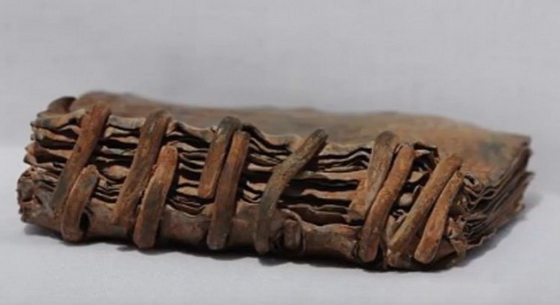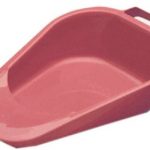Carved lead codices found in Jordan in 2008 and said to contain references to Jesus, have now been authenticated.
Ancient sets of carved lead tablets that had been found in a cave in Jordan in 2008 by an Israeli Bedouin and were first publicised in March 2011, apparently make references to Jesus and his disciples.

The sets of the metal tablets were held together with what looks like a modern ring binder.
The tablets suggest that Jesus was not starting his own religion, but restoring a thousand year old tradition from the time of King David and believed in a male-female God.
 One of the sets bears a resemblance to how the Book of Revelations is described as it has seven seals. Among the codices is also an image that possibly shows Jesus himself (pictured left).
One of the sets bears a resemblance to how the Book of Revelations is described as it has seven seals. Among the codices is also an image that possibly shows Jesus himself (pictured left).
On 22 March 2011 religious author and scholar David Elkington, together with his wife Jennifer, stated in a press release that a hoard of ancient books made of lead and copper, together with other artefacts probably dating from the 1st century CE, had been found in Jordan, and that they might predate the writings of St. Paul; furthermore, “leading academics” believed they might be as important as the Dead Sea Scrolls.
The books consist of between 5-15 leaves or plates each, about the size of a mobile phone, made of lead and copper, and bound together with lead rings on one side. Many of the books are also sealed with rings on the remaining three sides. Elkington reported that “In the upper square [of one of the book covers] we have the seven-branch menorah,” and the text is said to be in archaic Hebrew script (Paleo Hebrew), and some in a form of code.
So far these codices appear to be the earliest and only Hebrew-Christian documents in existence; metallurgical and linguistic analysis claim that they are.
A number of scholars pronounced them fakes at the time, most without having ever seeing the actual codices.
However, recently several tests were conducted by Professor Roger Webb and Professor Chris Jeynes at the University of Surrey’s Nodus Laboratory from the Ion Beam Center, UK. They confirmed that the tablet is compatible with a comparative sample of ancient Roman lead coming from an excavation site in Dorset.
Furthermore, the crystallization analysis points out that the tablet is between the years 1800-2000 years old. The experts shared that “this provides very strong evidence that the objects are of great age, consistent with the studies of the text and designs that suggest an age of around 2000 years.”
The archaeometallurgist and former Director of Antiquities in Amman, Dr. Ziad Al Saad has declared the discovery of the Jordan codices as one of the most important finds in that country.
 Bhagawati is a regular contributor
Bhagawati is a regular contributor
More articles by the same author on Osho News




Comments are closed.